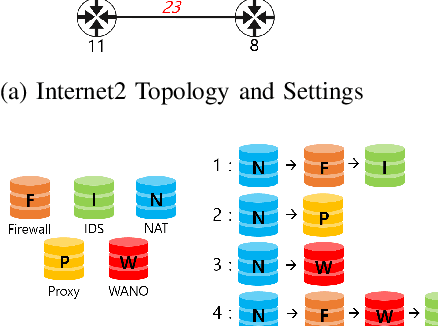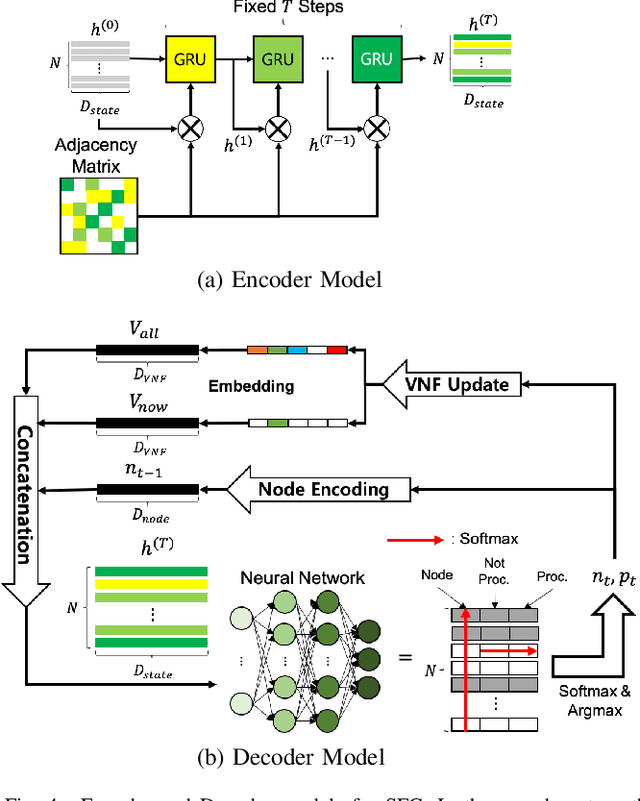Hee-Gon Kim
Reinforcement Learning of Graph Neural Networks for Service Function Chaining
Nov 17, 2020


Abstract:In the management of computer network systems, the service function chaining (SFC) modules play an important role by generating efficient paths for network traffic through physical servers with virtualized network functions (VNF). To provide the highest quality of services, the SFC module should generate a valid path quickly even in various network topology situations including dynamic VNF resources, various requests, and changes of topologies. The previous supervised learning method demonstrated that the network features can be represented by graph neural networks (GNNs) for the SFC task. However, the performance was limited to only the fixed topology with labeled data. In this paper, we apply reinforcement learning methods for training models on various network topologies with unlabeled data. In the experiments, compared to the previous supervised learning method, the proposed methods demonstrated remarkable flexibility in new topologies without re-designing and re-training, while preserving a similar level of performance.
Graph Neural Network based Service Function Chaining for Automatic Network Control
Sep 11, 2020



Abstract:Software-defined networking (SDN) and the network function virtualization (NFV) led to great developments in software based control technology by decreasing expenditures. Service function chaining (SFC) is an important technology to find efficient paths in network servers to process all of the requested virtualized network functions (VNF). However, SFC is challenging since it has to maintain high Quality of Service (QoS) even for complicated situations. Although some works have been conducted for such tasks with high-level intelligent models like deep neural networks (DNNs), those approaches are not efficient in utilizing the topology information of networks and cannot be applied to networks with dynamically changing topology since their models assume that the topology is fixed. In this paper, we propose a new neural network architecture for SFC, which is based on graph neural network (GNN) considering the graph-structured properties of network topology. The proposed SFC model consists of an encoder and a decoder, where the encoder finds the representation of the network topology, and then the decoder estimates probabilities of neighborhood nodes and their probabilities to process a VNF. In the experiments, our proposed architecture outperformed previous performances of DNN based baseline model. Moreover, the GNN based model can be applied to a new network topology without re-designing and re-training.
 Add to Chrome
Add to Chrome Add to Firefox
Add to Firefox Add to Edge
Add to Edge